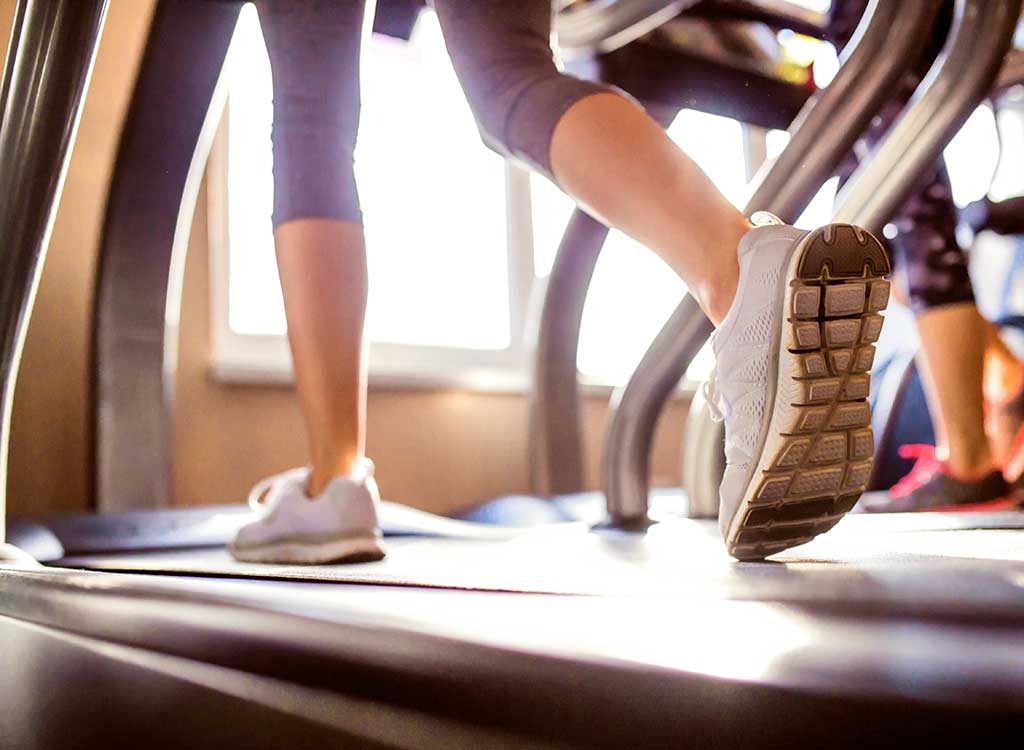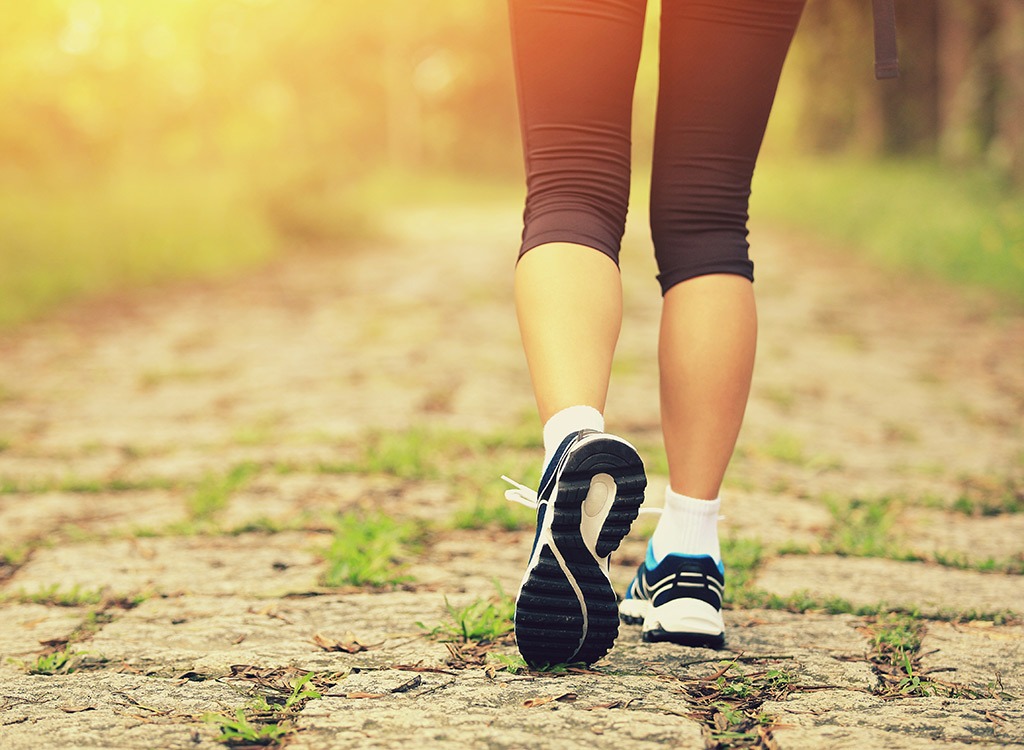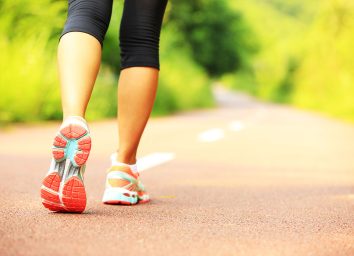Major Mistakes You Should Never Make While Walking, Say Experts

Contrary to what many fitness snobs may think, walking is indeed an effective way to exercise and even burn fat. In fact, according to a study published in the Journal of Exercise Nutrition & Biochemistry, researchers who studied the effects of walking on obese women over the course of a 12-week period found that it was especially effective at targeting and reducing visceral fat—otherwise known as belly fat, the type that increases your risk of diabetes and heart disease—while also helping improve the body’s insulin response. The researchers recommend walking for anyone suffering from obesity or metabolic syndrome, or anyone who does “not have prior experience with exercise.”
But just because walking comes naturally to us as bipedal mammals doesn’t mean that we all necessarily go about it correctly. After all, you could be wearing the wrong type of shoes, you could be using the wrong form, and you could be making a few crucial mental mistakes that could make your experience out there far less effective. For a few common mistakes you shouldn’t make while walking, read on. And for more reasons why you should walk more (correctly!) every day, make sure you’re aware of the One Major Side Effect of Sitting on the Couch Too Much, Says New Study.
You’re not walking outside.

Let’s be clear: Walking on a treadmill is better than not walking at all. But if you want to fully maximize the health benefits of your walks, a new report published by The Wall Street Journal indicates that you should be focusing on the time you’re walking outside rather than the distance or steps taken. This will help you soak in all of the benefits of being in nature. “Spending time in the woods—a practice the Japanese call ‘forest bathing’—is strongly linked to lower blood pressure, heart rate and stress hormones and decreased anxiety, depression and fatigue,” observes the Journal.
The report notes a study of 20,000 participants published in the journal Scientific Reports, which found that people were “significantly more likely to report good health and well-being when they spent 120 minutes or more in nature a week. The good vibe peaked at 200 to 300 minutes a week. Anything less than two hours didn’t make a difference.”
So, if you really want to be healthier and live longer, take your walk into the woods. And don’t forget to sign up for our newsletter to get the latest wellness news delivered straight to your inbox!
You’re dressed all wrong.

Newsflash: Dressing for a walk is different than dressing for a jog, and it all starts with your shoes. Today’s running shoes are designed to be stiffer and springier, and those designs are surprisingly not ideal for walking. You should wear lighter, more flexible shoes for walking, Michele Stanten, author of Walk Off Weight: Burn 3 Times More Fat With This Proven Program, explained to Real Simple. Also, you should wear lighter colors with sweat-wicking technology that isn’t too tight. At the end of the day, you want to wear functional clothing that is comfortable.
You’re carrying weights.

We’ve all seen speed-walkers in the park who are pumping their arms while clutching weights. Don’t do this. “[Two- to five-pound dumbbells] don’t create enough resistance to develop meaningful changes in strength,” Michele Olson, Ph.D., a professor of exercise science at Auburn University at Montgomery, in Alabama, also explained to Real Simple. “Yet they’re heavy enough to increase the risk of shoulder injury.”
You’re not varying the terrain.

To maximize the benefits of walking, you should constantly vary the terrain. That means walking up hills, straying from paths, and taking on challenging areas that require balance and challenging footwork. A study published in The Journal of Experimental Biology found that you’re guaranteed to burn more energy walking on “uneven terrain” and that it “caused a 28 to 62% increase in positive knee and hip work.”
You’re walking the same route every single day.

“Mix things up by changing your route once or twice a week,” advise the health experts at the Colon Cancer Coalition. “This helps to keep your fitness program interesting and challenges the muscles with changing terrain.”
You’re Taking Really Long Strides

It’s important to make your walk brisk and challenging in order to get your heart rate up, but it’s also important not to start taking extra long strides. According to Christopher John Lundstrom, Ph.D., MEd, director of sport and exercise science at the University of Minnesota School of Kinesiology, you should keep your steps shorter and underneath your trunk.
“You may be stepping out in front a little bit, but you don’t want to be overstriding and reaching really far in front of yourself,” he told The Healthy. “It’s less stable, you’ll feel a little off-balance, and if you plant your foot way in front of you, you’re basically hitting the brakes every time you land.” Doing this over time could lead to injuries such as shin splints, he says. And for more great fitness advice, make sure you know The Single Most Effective Way to Work Out Every Day, Say Psychologists.








